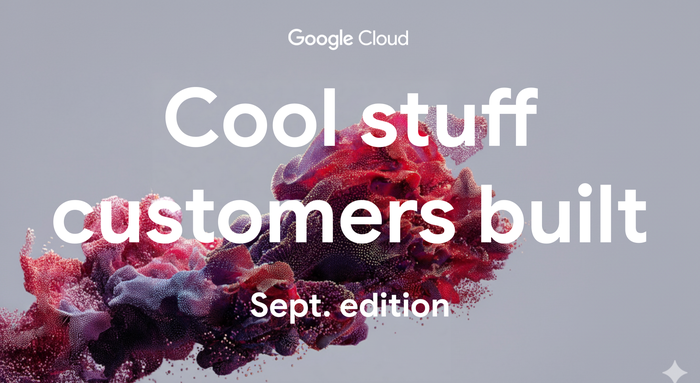The Speed Read with Quentin Hardy: Year in review
Quentin Hardy
Head of Editorial, Google Cloud
At the end of the year, we take stock of the past 12 months, and look to what the coming year will bring. For cloud computing, that means more, sliced even finer.
Welcome to the Speed Read, the “2020 Vision” edition.
Let’s start with the business landscape. In 2019, global enterprises continued a substantial move into cloud computing. In April, Gartner projected that worldwide spending on public cloud computing would be $214 billion. That’s about $586 million a day (or $24 million an hour, a million or two in the time it takes you to read this post). In 2020, the company said, the spending will rise to $249 billion, or $682 million a day.
Yes, an increase of about $100 million a day sounds big. Not all of that is public cloud computing, of course, though it’s likely that public clouds will continue to take a disproportionate share of the growth. One reason is economic, as they are often, but not always, cheaper than keeping and maintaining one’s own technology.
More importantly, there are an increasing number of use cases, particularly in issues of storage, security, and analysis (and its close cousin, machine learning) for which public clouds are well suited. They are also seen as superior places to build, test, refine, and deploy new applications.
Those two items, business use cases and product development, may be central to the virtuous spiral that affirms continued growth in public clouds. If it makes more business sense, and creates new ways to grow, it will continue.
Equally important, developments such as these underline another aspect of the growth of the cloud. Businesses will spend $100 million more per day than they have in 2019 in part because there continue to be more useful things to spend money on. Think about all of the new cloud-related analysis tools, open source frameworks, collaboration software, work management products, and other solutions that have come on the market.
At last spring’s Google Cloud Next alone, we announced the general availability of Anthos, and deepened integrations into Google Cloud Platform with seven of the leading open source centric database and data analytics companies. Anthos is built on Google Kubernetes Engine (GKE), a container management framework. Without going into too many details here, Kubernetes is an open source product used by many businesses for automating application deployment, scaling, and management. Anthos provides a way of working with several clouds at once, encouraging new business niches.
This underscores a theme that seems to be an increasingly prominent feature of the transition of enterprises to cloud computing.
Over the course of 2019, we’ve seen more discussion of “explainability,” and the need for artificial intelligence (AI) to show the work. AI is moving into more areas, in part because there are more and richer data sets being captured, and much of that is captured in clouds. As AI becomes more important in life, it needs to explain itself better.
We’ve heard talk of platforms as expression and amplification of a business ecosystem. Cloud may be a central platform in the new computing world—often a collection and concentration point for other computing nodes—but as the business grows, many others emerge.
There is the importance of open source and physical networks for secure and speedy transmission. Networks are often overlooked, with people concentrating on storage and computation, but as tools like AR (augmented reality) become commonplace for things like games or industrial training, the means of transmission will become more important. APIs and microservices, both tools to promulgate business better are part of this larger picture. They are something like what machine tools were in the Industrial Age, the tools of standardization that promoted growth.
Lastly, and perhaps most frequently, the industry is looking at new ways to collaborate and manage within these ecosystems. If the past is any guide, people will organize in ways that resemble the machines and means of productivity. If the theme of industry was hierarchy and assembly, cloud will likely be marked by continuous incrementalism, the way lots of cloud software becomes larger and takes on more attributes over time.
In that way, it’s a little like the future: It keeps showing up, a little more, day by day, building on the day before.
Happy New Year.



